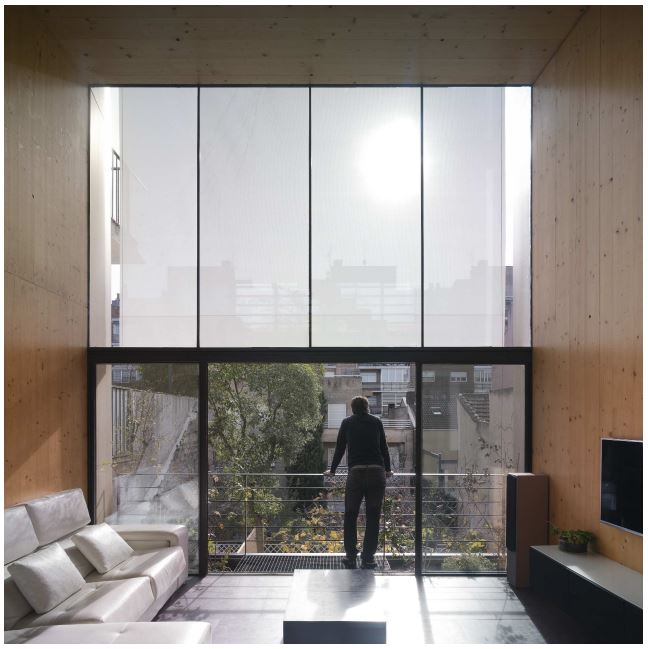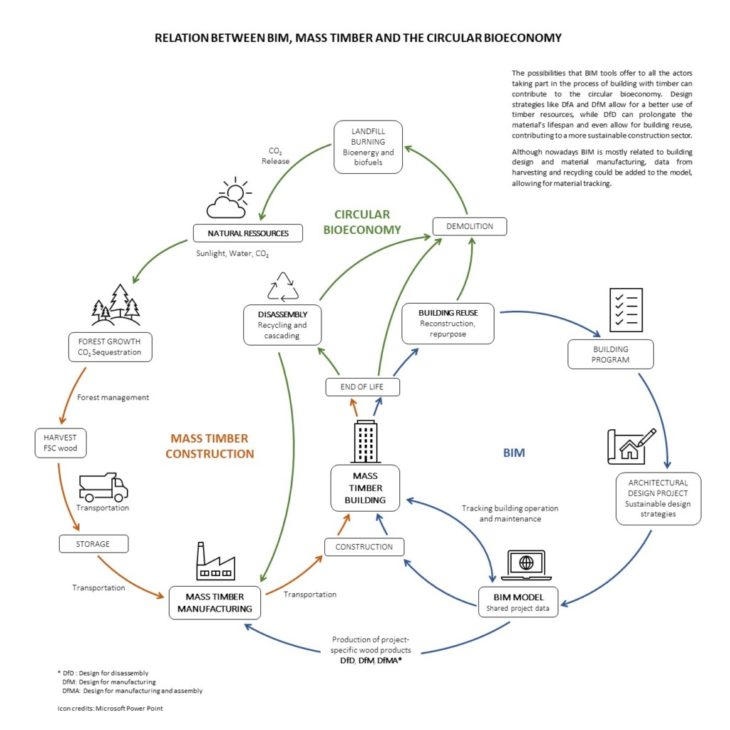Introduction
Modern timber construction can contribute to the preservation of our environmental resources in many ways. Probably best known is the fact that trees store carbon in their cells throughout their life, so using wood as a construction material is a way to transform buildings into carbon sinks. To do this in a sustainable way, we must be sure that the forests are well managed: the trees we harvest need to be replaced by new trees that assure biodiversity, protecting the fauna of the forest. Transportation to the manufacturing plants and to the building site has to be considered as well, since it is a source of CO2 emissions, it should be as short as possible.

Interior of the timber project SUMA Studio and Home. Source: SUMA Arquitectura
Timber construction and BIM
Another way in which timber construction can contribute to sustainable development is prefabrication. This is made possible by Building Information Modelling (BIM), a collaborative approach to projecting buildings using specific software. BIM allows for exchange between professionals, and it is widely used for regular projects (that meaning projects that don’t necessarily have a timber structure). Having a BIM model for a timber project has become an essential part of this kind of construction, since the information of the different pieces of the project from the BIM model is directly sent to the manufacturer, who will prepare all the building elements to be assembled on site. This shortens the building times, and the building site is cleaner and less noisy if compared with a construction site of a concrete building.

View of the SUMA Studio and Home modeled in BIM (Revit interface)
But BIM also opens a series of other possibilities that are directly linked to the circular economy. It can track the materials used: from the tree to the CLT screen, we can follow the material throughout its lifespan. This includes designing for disassembly (DfD), prolonging the utile life of the material. A structural element can become a by-product, can be recycled, and ultimately it can be used for bioenergy.
BIM, Mass Timber and the Circular Bio-economy
As a conclusion, we can say that knowledge of BIM is critical for architects, engineers and other actors involved in the construction of our future cities, as it can connect construction materials to the circular bio-economy and lead to a more sustainable building sector.

Diagram showing the relationship with BIM, Mass Timber Construction and the Circular Bioeconomy
The Role of BIM in Mass Timber Construction is a project of IAAC, Institute for Advanced Architecture of Catalonia developed for MMTD in 2021 by student Maria Cotela Dalmau. Faculty: Michael Salka. Course: Tools